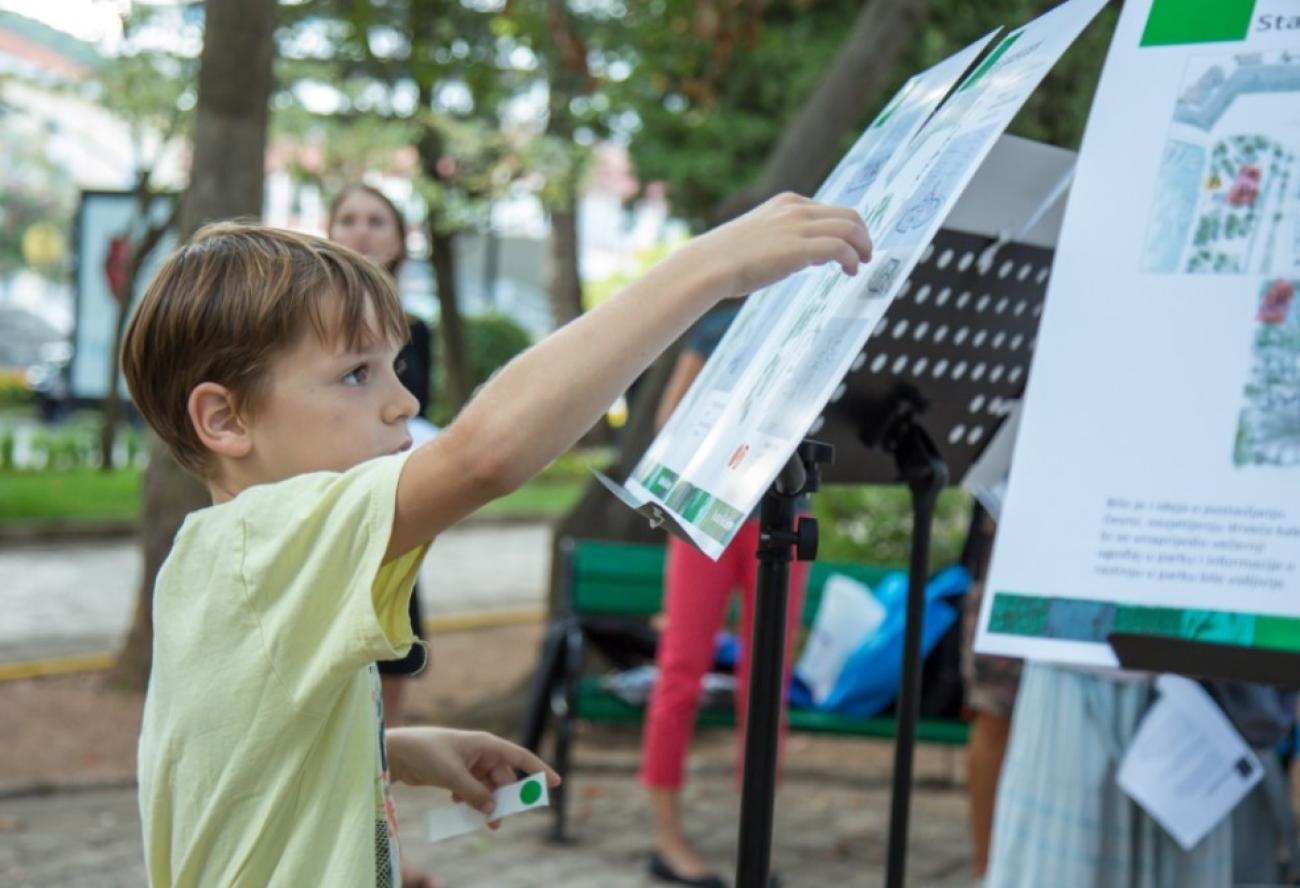We are all involved in shaping our cities, towns and places, whether we build the buildings and spaces, look after them or just share them. If we plan cities for more cars and traffic, we will get more cars and traffic. But if we plan for people and places, we will get people and beautiful places they can spend time in and want to spend time in.
Montenegro’s tourism resort Budva is one of the oldest cities on the Mediterranean coast, with a history of about 2500 years. Facing the azure blue waters of Adriatic, and with a dramatic mountain backdrop, its setting is stunning.
The landscape, including the nearby islands, the beaches, many historical sites, the warmth of the climate and the local people all provide for an unforgettable experience.
Still, common problems like traffic-dominated streets, little-used parks, lack of green spaces and huge development projects blight Budva. More traffic, more buildings and greater road capacity are not necessarily the inevitable results of growth.
So, the growth of the city demands our attention. So, how can UNDP help Budva become a better place to live?
In cooperation with the municipality authorities it started with the decision to re-design public spaces as comfortable, attractive and safe for everyone using a design approach known as - inclusive urban design or placemaking. It means local people worked together with professional designers to reinvent the potential of parks, downtowns, waterfronts, plazas, neighborhoods, and markets.
The workshop was organized to empower people in the community to undertake Placemaking work themselves. They looked at the open spaces that were particularly important to people in Budva selected from a survey undertaken months before. Most participants were very open in sharing their time, insights and ideas.
“Any place where you have foot traffic, there's an opportunity for placemaking. People animate public spaces using art and culture and just by being there. With the right surroundings and management these paces can become valued gathering places. It connects the local community and visitors together while under-utilized spaces come alive,’’ said Jenny Donovan, a principal of Melbourne-based urban design practice, Inclusive Design, who volunteered her time to help Budva Go Green.
The sites that the project looked at were the top 3 publicly owned and accessible sites. We focused our attention where it would have the greatest impact and where change was most possible.
Dot Voting with a Difference
After a group brainstorming session, we had dozens of wonderful ideas. So how we decided which ones to pursue? We used the Dot voting technique for the best results.
Panels with several ideas per site were presented in the Old Town Park with passers-by being invited to look at the boards and vote by placing green and red dots for approval or disapproval. Options with the most dots “won” and so now we begin re-telling the story about Budva.
People of Budva have been heard. For Budva resident, Ivana Franeta ‘’every solution is acceptable and most welcome that’s why I never used a red dot. There should be at least 5 things to do, arranged in such a way as to create social connections.
‘’Placemaking strikes a balance between the built, the social and the ecological qualities of a place’’.
Professor Ana Markovic
’Improving public spaces for the people who use them means to truly listen to people, and to see what works best, eventually turning a group vision into the reality of a great public place"
Mayor of Budva Dragan Krapovic
Public space can be a stage
Selected Budva parks will be turned into multi-use stages, where people living in busy urban areas can find breathing room, be active, connect with one another and enjoy nature. It will help them feel proud and better connected to their cultural heritage and the place they live.
- At the Old City park the proposals addressed the sites wonderful heritage by introducing playable sculptural features that will inspire children to play and adults will find thought provoking. The trees will be up-light, the sculptures will benefit the night character and introduce ‘little free libraries’ that reflect the maritime heritage and create a little landmark on the square.
- Park near the NLB Bank, often called the ‘front door’ to Budva for tourists. Here the proposals created an attractive sense of arrival with a ‘selfie spot’ of a memorable landmark that affirms the sustainability credentials of the place. Waiting for public transport will be made more comfortable assisting people to find their way around more easily.
Park at the Sun Square is the front door to Budva for residents. The space was used differently from a spot to take wedding photographs to a meeting place. Here the proposals will create a landscaped pavilion as a centerpiece of the square. This would include a range of uses such as café, gallery, including seats with pergolas around the edge of the square.
People decided - Budva Goes Green
The character of a city is defined by its public space. UNDP helps Budva GoGreen by strengthening the town's voice and allowing an urban vision to develop as seen through the eyes of the best experts in the field—the people who live, work and play in a place - women, the old and the young.
“Inclusive development requires responsive governments and empowered citizens. Inclusive urban design is a story that focuses on what people do in cities, how our shared experience in cities drives collaboration’’
Aleksandra Kikovic, UNDP - Low Carbon Tourism Programme Manage
Making Sustainable Cities
And what does it mean for the most popular tourism resort in Montenegro?
Giving a voice to its residents will help authorities to better understand their needs, and create more exciting and innovative - green destination Budva.
Placemaking for Budva will also influence the way communities in Montenegro are built today - by allowing ideas and aspirations of people about the places they inhabit -considered





